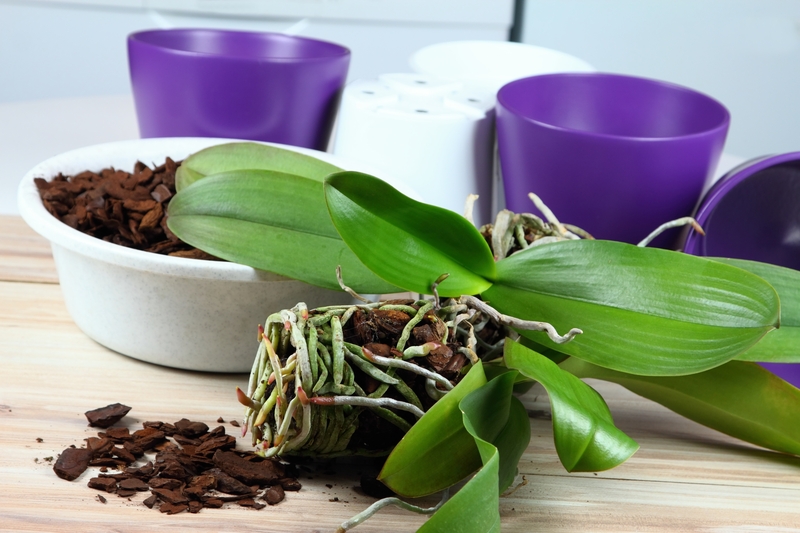Planting Seeds of Hope to Combat Climate Change
Posted on 19/09/2025
Planting Seeds of Hope to Combat Climate Change: A Comprehensive Guide
As the world faces unprecedented environmental challenges, the notion of planting seeds of hope to combat climate change is taking on powerful, multifaceted meaning. Both a literal action and a metaphor for transformation, the process of planting--whether it's trees, crops, or ideas--emerges as a critical strategy in the global effort to slow warming, restore ecosystems, and empower communities. In this article, we explore the transformative power of this movement, uncover its science, and provide actionable tips for anyone eager to make a tangible difference in mitigating the climate crisis.
Understanding the Climate Change Crisis
Climate change, driven primarily by human-induced greenhouse gas emissions, poses grave risks to our planet. Rising temperatures, shifting weather patterns, increased natural disasters, and biodiversity loss are just some of the consequences. Yet, amid these challenges, grassroots and global initiatives for planting hope against climate change are proving to be beacons of possibility and resilience.
Why "Planting Seeds of Hope" Matters
At its heart, planting seeds of hope to combat climate change means more than sowing physical seeds in soil. It involves:
- Restoring ecosystems: Reforesting degraded land, reviving biodiversity, and protecting existing green spaces.
- Empowering individuals and communities: Encouraging sustainable habits and fostering environmental stewardship.
- Inspiring innovation: Supporting climate-friendly technologies and practices in farming, urban planning, and policy.
- Building resilience: Enhancing the ability of people and nature to withstand climate impacts.

The Science Behind Planting to Combat Climate Change
The Role of Trees in Carbon Sequestration
Forests act as vital carbon sinks, absorbing carbon dioxide (CO?) from the atmosphere as they grow. According to scientific estimates, mature forests can sequester up to 2.6 billion metric tons of CO? annually. By planting and maintaining trees, we are directly investing in the Earth's lungs--an indispensable step in the fight against global warming.
- Photosynthesis: Through this process, trees convert CO? and sunlight into oxygen and glucose, locking away carbon and releasing clean air.
- Soil health: Trees and plants improve soil fertility, structure, and its own ability to store carbon.
- Biodiversity: Adding native and diverse species provides habitats for countless organisms, fostering resilient ecosystems.
Urban Greening: Planting Hope in Cities
Urban areas contribute nearly 70% of global carbon emissions. Initiatives that focus on planting more trees and greenspaces within cities do more than beautify them--they cool ambient temperatures, filter pollutants, and encourage a healthier, more biodiverse environment. Through urban gardening and reforestation, city dwellers can play a critical role in planting hope and fighting climate change in their own neighborhoods.
Reforestation and Afforestation: Key Strategies
The movements of reforestation (restoring lost forests) and afforestation (planting new forests in areas previously not forested) are foundational to seed-based climate solutions.
Major Global Reforestation Projects
- The Trillion Trees Initiative: Launched by the World Economic Forum, its goal is to restore, conserve, or grow one trillion trees by 2030.
- Great Green Wall of Africa: This ambitious project seeks to grow an 8,000-kilometer belt of trees across the Sahel region, restoring land, combating desertification, and transforming millions of lives.
- India's Massive Tree-Planting Drives: In 2017, volunteers in India set a Guinness World Record by planting over 66 million trees in a single day.
- Community-based Initiatives: Local projects such as school tree drives, urban gardening clubs, and indigenous reforestation efforts are making a difference worldwide.
How You Can Contribute to Planting Seeds of Hope
Every individual action matters. Here are ways you can actively participate in planting seeds for climate recovery:
- Join local tree-planting events.
- Start a home or community garden.
- Support organizations focused on global reforestation.
- Advocate for the protection of ancient forests in your region.
- Educate your community about the importance of biodiversity and native species.
Beyond Trees: Planting Seeds of Hope Through Regenerative Agriculture
While forests are critical, the planting of hope to combat climate change also extends to farming. Regenerative agriculture is an approach that prioritizes soil health, minimizes chemical use, and increases biodiversity. This method not only sequesters carbon but produces nutrient-rich food, supports pollinator populations, and helps retain water in the landscape.
- Crop rotation and cover cropping restore fertility while fixing carbon in the soil.
- No-till practices reduce erosion and maintain the delicate balance of the underground ecosystem.
- Agroforestry combines trees and crops, boosting yields and soil stability while enhancing carbon capture.
Community Gardens: Urban Seeds of Change
Across the globe, community gardens are empowering city dwellers to grow food, support pollinators, and lower their carbon footprint. Planting seeds of hope against climate change in cities isn't limited to trees; it includes herbs, vegetables, wildflowers, and native shrubs. These efforts foster community ties while promoting fresh food access and environmental awareness.
Inspiring Stories: Seeds of Hope in Action
Wangari Maathai and the Green Belt Movement
In Kenya, the late Nobel Laureate Wangari Maathai founded the Green Belt Movement, which empowered women to plant more than 51 million trees, restoring forests, combating deforestation, and advancing women's rights. Her vision demonstrated how planting a single tree can spark positive change on multiple fronts.
Greta Thunberg and Youth-Led Climate Strikes
While not focused on seeds or trees per se, Greta Thunberg's global movement is about cultivating hope. Millions of youth are demanding ambitious climate action, proving that the seeds of hope include passionate advocacy and civic engagement.
Indigenous Stewardship: Wisdom Passed Down
Indigenous communities have been planting, preserving, and caring for their lands for generations. Their traditional ecological knowledge and spiritual connection to the Earth are foundational in ensuring restoration efforts are effective and respectful. Partnering with Indigenous leaders grounds the planting of hope to combat climate change in wisdom that's stood the test of time.
The Metaphorical Meaning: Sowing Ideas and Innovation
Planting seeds of hope goes beyond earth and growing--it speaks to cultivating a mindset for positive environmental action:
- Education and storytelling can inspire the next generation of scientists, campaigners, and policy-makers.
- Investing in green start-ups can yield revolutionary solutions, from new renewable energy sources to upcycled materials.
- Supporting climate-friendly policies puts pressure on leaders to prioritize the planet.
How Planting Seeds Fights Climate Change: The Benefits
Environmental Advantages
- Carbon Sequestration: Trees and healthy soils act as natural carbon sinks, removing and storing CO? from the atmosphere.
- Biodiversity: Forests and regenerative farms provide homes for wildlife, insects, and beneficial microorganisms.
- Water Conservation: Tree roots and healthy soils filter rainwater, reducing erosion and improving regional water cycles.
- Air Quality Improvement: Plants filter harmful pollutants, making the air cleaner and healthier.
Social and Economic Benefits
- Job Creation: Reforestation and sustainable agriculture create green jobs, especially in rural areas where opportunities are needed.
- Health and Well-being: Access to green space is linked to lower rates of stress, depression, and obesity.
- Food Security: Community and urban gardens help provide nutritious food, buffer against supply chain shocks, and reduce food miles.
Climate Resilience
- Reduced Urban Heat Islands: More trees in cities can lower temperatures by up to 5?C during heatwaves.
- Stormwater Management: Green infrastructure mitigates flooding during heavy rains, preventing costly damage.
- Disaster Risk Reduction: Healthy forests and mangroves act as natural barriers against storms, landslides, and drought.
How to Get Started: Planting Your Own Seeds of Hope Today
Tips for Successful Tree and Garden Planting
- Choose native species that are adapted to your local climate and support local wildlife.
- Plant at the right time of year, typically during cool, rainy seasons for best survival rates.
- Work with your local community to maximize impact and pool resources.
- Protect and nurture young plants by mulching, watering, and guarding against pests.
- Educate others about the benefits of your efforts and invite them to join the movement.
Supporting Larger Initiatives
- Donate to reputable reforestation nonprofits that have track records of effective, sustainable work.
- Offset your carbon footprint by supporting tree-planting carbon offset projects.
- Advocate for better environmental policies at local, national, and global levels.
- Reduce your own ecological footprint through everyday choices--eat less meat, reduce waste, use public transit, and support renewable energy.

The Far-Reaching Impact of Planting Hope for Climate Change
The ripple effects of planting seeds of hope to fight climate change are transformative. From cooling the planet and reversing damage to rebuilding communities and mental fortitude, each action plants the potential for a livable, abundant future. The world needs many hands--and hearts--working together to ensure these seeds take root.
Conclusion: Be the Change--Plant Seeds of Hope Today
While the climate crisis can feel daunting, history shows that small, hopeful actions can spur enduring change. Whether you're putting a seed in the ground, teaching a child about nature, supporting innovation, or advocating for better policies, you are part of a global movement growing toward a sustainable future. Let's plant seeds of hope--for our planet, our communities, and generations yet to come.
Join the movement. Every seed counts in building hope to combat climate change.

